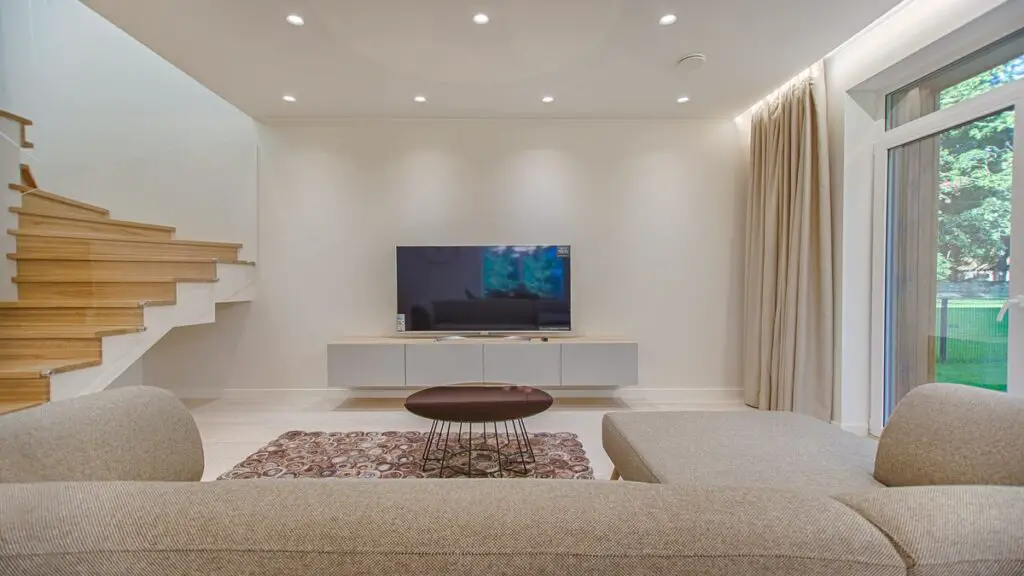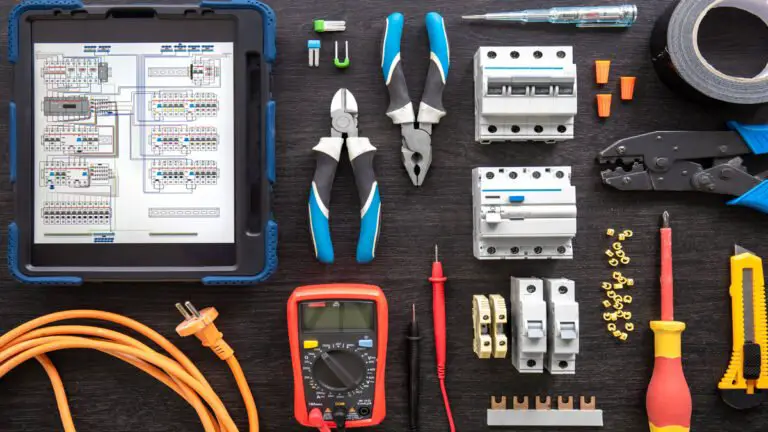The concept of a smart home has revolutionized the way we live, transforming traditional omes into intelligent living spaces that enhance our convenience, comfort, and security. With the rapid advancement of technology, smart home have become more accessible and affordable, providing homeowners with a range of exciting possibilities. In this article, we will explore the world of smart home, its advantages, components, popular platforms, challenges, future trends, and more.
Introduction to Smart Home
In recent years, smart home have gained significant popularity due to their ability to integrate various devices and systems to create a cohesive, automated living environment. These homes utilize cutting-edge technology and Internet of Things (IoT) connectivity to enable residents to control and monitor different aspects of their homes remotely. From lighting and temperature to security and appliances, smart home offer a seamless and personalized experience.
What is Smart Home?
A smart home refers to a residence equipped with devices and systems that can be controlled and automated remotely. These homes are designed to enhance the overall quality of life by providing convenience, energy efficiency, and security. Through the integration of smart devices and IoT technology, homeowners can manage and monitor their homes from anywhere using their smartphones, tablets, or voice assistants.
Advantages of Smart Home
Convenience and Comfort
One of the primary advantages of a smart home is the convenience it offers. With just a few taps on a mobile app or a voice command, you can control the lighting, adjust the temperature, and even lock or unlock doors. Smart home simplify daily tasks and streamline household management, providing you with more time and peace of mind.
Energy Efficiency
Smart homes are designed to be energy-efficient, reducing wastage and lowering utility bills. For example, smart thermostats can learn your temperature preferences and adjust the heating and cooling accordingly, optimizing energy usage. Smart lighting systems can automatically turn off lights in unoccupied rooms, conserving electricity. These energy-saving features not only benefit the environment but also contribute to long-term cost savings.
Improved Security
Home security is a top priority for many homeowners, and smart home provide advanced security features. Smart security systems offer real-time monitoring, surveillance cameras, motion sensors, and smart locks, enabling you to keep a watchful eye on your property even when you’re away. Notifications and alerts can be sent to your devices in case of any suspicious activity, providing a sense of security and peace of mind.
Remote Access and Control
Gone are the days when you had to be physically present at home to manage its various aspects. With smart home, you can remotely control and monitor your home’s devices and systems. Forgot to turn off the lights before leaving? No problem. Just use your smartphone to switch them off. Want to preheat the oven before you arrive home? Simply use your app to do so. Remote access and control empower homeowners with flexibility and convenience.
Components of Smart Home
A smart home consists of several components that work together to create a smart and intelligent living space. Let’s explore some of the key components:
1. Smart Lighting: Smart lighting systems allow you to control the lights in your home through voice commands or smartphone apps. You can adjust the brightness, color, and even schedule automated lighting scenes to match your preferences or create different moods for various occasions. Say goodbye to manually switching off lights in every room and embrace the convenience of smart lighting.
2. Smart Thermostats: Smart thermostats revolutionize the way we manage our home’s temperature. These devices learn your heating and cooling patterns, adjust the temperature based on your preferences, and can even detect when you’re away to optimize energy usage. With a smart thermostat, you can effortlessly maintain a comfortable environment while saving energy and reducing your carbon footprint.
3. Smart Security Systems: Enhancing the security of your home is a vital aspect of a smart home setup. Smart security systems include features such as surveillance cameras, motion sensors, door/window sensors, and smart locks. These systems can be monitored and controlled remotely, providing real-time updates and notifications on any suspicious activity. Enjoy the peace of mind knowing that your home is secure, whether you’re inside or away.
4. Smart Appliances: From refrigerators to washing machines, smart appliances bring convenience and efficiency to everyday tasks. Imagine receiving alerts when your groceries are running low or remotely starting your washing machine while you’re out. Smart appliances offer innovative features that simplify your household chores and help you manage your home more efficiently.
Popular Smart Home Platforms
Several platforms have emerged as leaders in the smart home industry, offering seamless integration and compatibility with various smart devices.
Let’s take a look at some of the most popular platforms:
1. Amazon Alexa: Alexa, the voice assistant developed by Amazon, powers their smart home ecosystem. Compatible with a wide range of devices, Alexa allows you to control your smart home through voice commands. From adjusting the lights to playing music and even ordering products online, Alexa brings the power of voice control to your fingertips.
2. Google Assistant: Google Assistant is another widely used voice assistant that works with smart home devices. It integrates with Google’s ecosystem, enabling you to control your smart devices, ask questions, set reminders, and access a wealth of information using just your voice. Google Assistant offers seamless connectivity and a user-friendly experience.
3. Apple HomeKit: Apple HomeKit is designed for users who are deeply embedded in the Apple ecosystem. It allows you to control your smart home devices using Siri, Apple’s voice assistant. With HomeKit, you can create scenes, automate tasks, and control multiple devices simultaneously, all while prioritizing privacy and data security.
These platforms offer extensive support for third-party devices, making it easier for homeowners to build a comprehensive smart home system tailored to their needs and preferences.
Challenges and Considerations for Smart Home
While smart home offer numerous benefits, there are some challenges and considerations to keep in mind:
1. Privacy and Data Security: With increased connectivity comes the need to prioritize privacy and data security. Smart home devices collect and process personal data, so it’s crucial to choose reputable brands and ensure your network is secure. Regularly updating firmware, using strong passwords, and being cautious about granting permissions are essential practices to protect your privacy.
2. Compatibility and Integration: The smart home market is filled with a variety of devices and brands, and ensuring compatibility and seamless integration can be a challenge. Before purchasing smart devices, check their compatibility with your chosen platform and existing devices. Opting for devices that support industry standards like Zigbee or Z-Wave can simplify integration.
3. Initial Setup and Cost: Setting up a smart home requires some initial effort and investment. You need to connect and configure each device, set up automation rules, and familiarize yourself with the control interfaces. While this may take some time, the long-term benefits outweigh the initial setup. However, it’s important to consider the cost factor. Smart home devices can vary in price, and the overall cost will depend on the number and complexity of devices you choose to incorporate into your home.
4. User Learning Curve: As with any new technology, there is a learning curve associated with smart home. You may need to spend some time understanding how each device works, exploring their features, and customizing settings according to your preferences. The user interfaces of different devices and platforms may also vary, requiring some adjustment and learning. However, with a little patience and exploration, you’ll soon become proficient in managing your smart home.
5. Reliability and Technical Issues: While smart home technology has significantly advanced, occasional technical issues or device malfunctions may still arise. This could range from connectivity issues to software glitches. It’s essential to choose reliable devices from reputable brands and stay updated with the latest firmware updates to minimize such issues. Additionally, having a backup plan in case of power outages or internet disruptions is advisable.
Future Trends in Smart Homes
The future of smart home looks promising, with continuous innovation and exciting possibilities on the horizon. Here are some trends to watch out for:
1. Voice Control and Artificial Intelligence: Voice assistants like Alexa, Google Assistant, and Siri will become even more integrated into smart home systems. They will not only follow voice commands but also understand context and provide more personalized experiences. Artificial intelligence will play a significant role in optimizing energy usage, anticipating user needs, and automating routine tasks.
2. Interconnectivity and IoT Integration: Smart home will become more inter smart, allowing devices to communicate and work together seamlessly. This means smart thermostat can communicate with your smart lighting system to adjust the lights based on the room’s temperature. Integration with other IoT devices like wearable and smart cars will further enhance the smart ecosystem.
3. Sustainability and Green Technology: Smart home will prioritize sustainability and energy efficiency. Integration with renewable energy sources like solar panels, smart grids, and energy storage systems will become more prevalent. Additionally, smart home will provide real-time energy consumption data, empowering homeowners to make informed decisions and reduce their environmental impact.
Conclusion
Smart homes have transformed the way we live, offering convenience, comfort, and enhanced security. With components like smart lighting, thermostats, security systems, and appliances, homeowners can create a personalized and smart living environment. Popular platforms like Amazon Alexa, Google Assistant, and Apple Home Kit provide seamless integration and control options. While challenges like privacy, compatibility, and cost exist, the future of smart homes holds exciting developments in voice control, interconnectivity, and sustainability. Embracing smart home technology can truly revolutionize your living experience.
FAQ Section
1. Are smart home devices compatible with each other?
Yes, many smart home devices are designed to be compatible with each other. However, it’s important to check compatibility before purchasing devices to ensure seamless integration.
2. Can I control my smart home when I’m away from home?
Absolutely! One of the major advantages of a smart home is the ability to control and monitor your devices remotely using smartphone apps or voice assistants.
3. Are smart homes safe from hackers?
While no system is completely immune to hacking, taking necessary precautions like using secure networks, updating firmware regularly, and choosing reputable brands can significantly enhance the security of your smart home.
4. Do smart homes save energy?
Yes, smart homes are designed to save energy. Smart thermostats can optimize temperature settings based on occupancy, reducing unnecessary energy consumption. Smart lighting systems allow for efficient control, ensuring lights are only on when needed. Additionally, energy monitoring features in smart home devices enable homeowners to track and manage their energy usage more effectively.
5. Can I add smart home features to my existing home?
Yes, you can add smart home features to your existing home. Many smart devices are designed to be retrofitted, meaning they can be easily installed and integrated into your current infrastructure without major renovations. From smart plugs to smart door locks, there are numerous options available to upgrade your home.







